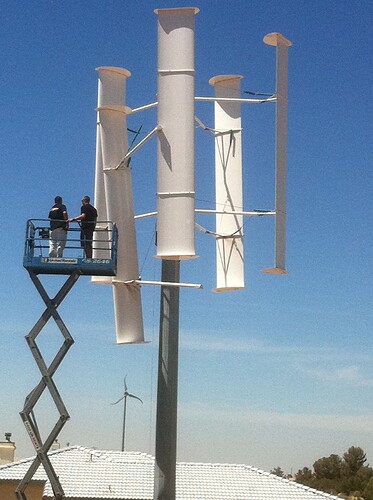I have just seen the first elements of this recent study (June 2023), which appears to be a seminal publication, leading to a possible new main path of AWE. Indeed it could lead to a significant energy generation (by wake revitalization) without the requirement of tethers, generators, motors, additional land use…So a specific topic is needed.
Further studies could be envisaged, covering numerous fields, starting with the safety of unmanned gliders in dynamic soaring, in regard to the proximity to the blades of the wind turbines.
I mentioned this study on (Dynamic) Soaring - #4 by PierreB and AWEC 2024 CfA Ideas Discussion - #6 by PierreB.
The full PDF is available on
https://www.researchgate.net/publication/371620671_Dynamic_Soaring_in_Wind_Turbine_Wakes/comments
Congratulations to the authors:
Also on https://www.sciencedirect.com/science/article/abs/pii/S0947358023000717. Some excerpts of the description are below:
Abstract
Dynamic soaring for UAVs is a flight technique that enables continuous, powerless periodic flight patterns in the presence of a wind gradient. However, sufficiently large wind gradients are uncommon over land, while at offshore locations the largest wind gradients are located close to the ocean surface, thereby limiting the scope of practical application. An intrinsic feature of wind turbines is that they inherently produce very sharp wind gradients in the near wake. Therefore, in this paper, we propose and investigate periodic stationary dynamic soaring trajectories in the near wake of wind turbines. We additionally consider the potential of dynamic soaring for revitalizing the wind turbine wake. To this end, we apply periodic optimal control based on a simplified model for the glider dynamics and the wind profile in the wake. The cost function maximizes the revitalization of the wake. We compute optimal orbits for a range of different wing spans and different mass-scaling assumptions. The largest glider configuration, with a wingspan of 10 m and a mass of 222.6 kg, achieves a wake revitalization of about 0.94% of the total turbine thrust.
Introduction
Modern wind turbines are often clustered together in large farms in order to reduce balance-of-system costs and optimize the use of land or sea concession areas. However, wind turbines generate wakes that impair the efficiency of downstream turbines when spaced too closely together. In modern wind farms, with turbine spacings of 5 to 7 turbine diameters, overall efficiency losses due to wakes can be up to 40% and more, depending on wind direction and atmospheric conditions [2]. In the current work, we propose and investigate the potential of using glider planes to speed up wake recovery, by flying dynamic soaring loops between a wind turbine near wake and the surrounding free stream. […]
Thus, e.g., at the Betz–Joukowsky limit (a =1/3), wake dissipation amounts to approximately 50% of the turbine power production. For a 10 MW turbine, this amounts to 5 MW.
In the near wake, the described wake dissipation power is still available in the velocity difference between wake and free stream, and can thus be harvested by UAVs using dynamic soaring maneuvres [13]. Dynamic soaring is a flight technique that enables continuous, powerless periodic ‘loiter‘ flight patterns in the presence of a wind gradient. These patterns have been computed, analyzed, and experimentally validated in Bencatel et al. [3], Zhao [12], Zhu et al. [13] for typical wind scenarios.
In this work, we propose and investigate periodic stationary dynamic soaring trajectories of a glider in the near wake of wind turbines. This could be applied to achieve indefinite flight times so as to generate a quasi-continuous stream of inspection data or environmental measurements. However, our aim is to investigate how dynamic soaring can additionally be used to transfer momentum from the free stream to the wake, thus enhancing wake recovery. To this end, we apply optimal control based on a simplified glider model to compute periodic flight orbits that maximize wake revitalization and investigate how this objective depends on the glider wing span and mass.
The remainder of this paper is organized as follows. Section 2 introduces a model for the wind profile and the glider plane, while Section 3 states the optimal control problem formulation and solution strategy. Section 4 describes the obtained numerical solutions and discusses the results of a parameter sweep with respect to the glider plane size. Section 5 gives a conclusion. […]
Conclusion
In this paper, we proposed and investigate a novel way to fly a glider plane in dynamic soaring trajectories in the wake behind a wind turbine. We formulated and solved an optimal control problem to maximize the revitalization of the wake. We showed that stationary trajectories exist for an Ampyx AP2 glider, and, after performing a grid search on other possible parameters, we found that with a larger plane, we can revitalize the wake by approximately 0.94% of the turbine thrust. Future work…[…]
 Jochem De Schutter
Jochem De Schutter Moritz Diehl
Moritz Diehl Johan Meyers
Johan Meyers